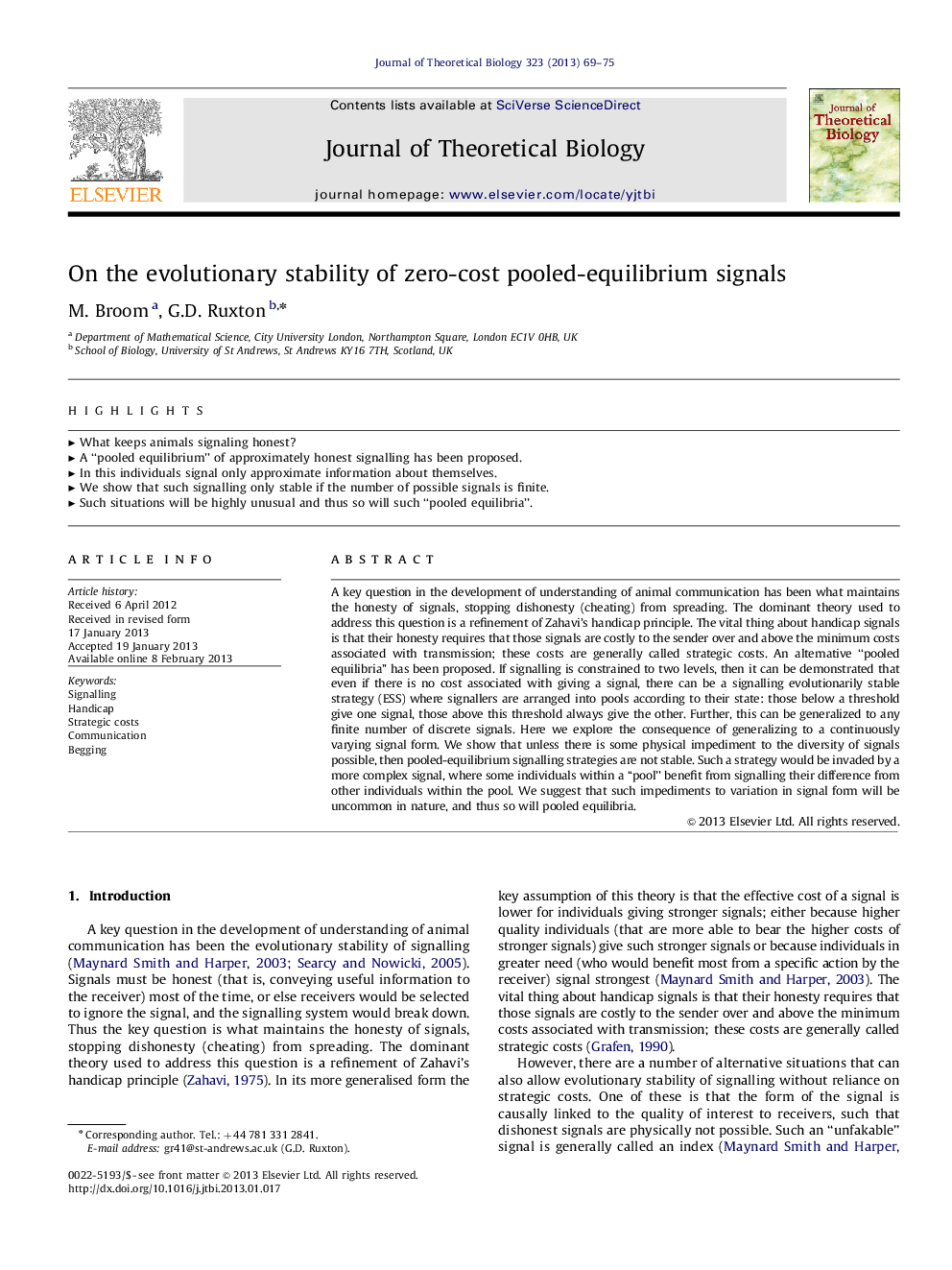| Article ID | Journal | Published Year | Pages | File Type |
|---|---|---|---|---|
| 4496457 | Journal of Theoretical Biology | 2013 | 7 Pages |
A key question in the development of understanding of animal communication has been what maintains the honesty of signals, stopping dishonesty (cheating) from spreading. The dominant theory used to address this question is a refinement of Zahavi’s handicap principle. The vital thing about handicap signals is that their honesty requires that those signals are costly to the sender over and above the minimum costs associated with transmission; these costs are generally called strategic costs. An alternative “pooled equilibria” has been proposed. If signalling is constrained to two levels, then it can be demonstrated that even if there is no cost associated with giving a signal, there can be a signalling evolutionarily stable strategy (ESS) where signallers are arranged into pools according to their state: those below a threshold give one signal, those above this threshold always give the other. Further, this can be generalized to any finite number of discrete signals. Here we explore the consequence of generalizing to a continuously varying signal form. We show that unless there is some physical impediment to the diversity of signals possible, then pooled-equilibrium signalling strategies are not stable. Such a strategy would be invaded by a more complex signal, where some individuals within a “pool” benefit from signalling their difference from other individuals within the pool. We suggest that such impediments to variation in signal form will be uncommon in nature, and thus so will pooled equilibria.
► What keeps animals signaling honest? ► A “pooled equilibrium” of approximately honest signalling has been proposed. ► In this individuals signal only approximate information about themselves. ► We show that such signalling only stable if the number of possible signals is finite. ► Such situations will be highly unusual and thus so will such “pooled equilibria”.
